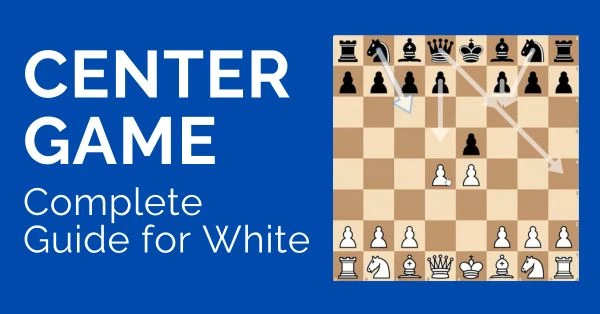
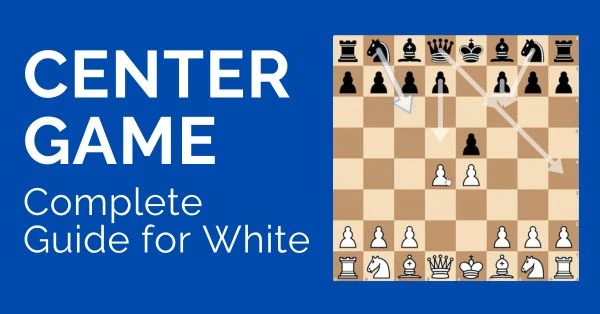
The Center Game is a relatively easy-to-learn and provocative opening for White. A lot of Black players don’t give the Center Game enough credit. It’s a very aggressive and ambitious way to start the game.
One of the positives of being an amateur player is that you can choose from a wide range of openings.
Rarely will you face an opponent booked up to move 15 or 20 in an opening like the center game. You can be assured that a large proportion of your opponents will know very little about it
You get a dynamically balanced position out of the opening. Although White cannot expect an advantage in practical play it is a great surprise weapon. The surprise factor trumps the shortcomings of the opening as Black players will be unprepared for an opening that is so rarely played.
Ideas for White and Black
1.e4 e5 2.d4
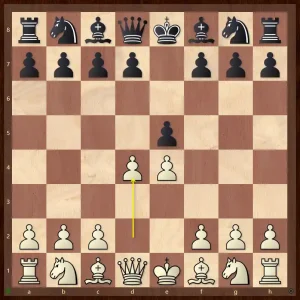
With the move 2.d4 White quickly strikes in the center. Black cannot let the pawn advance and his best option is to capture and drive the Queen out.
2..exd4 3.Qxd4
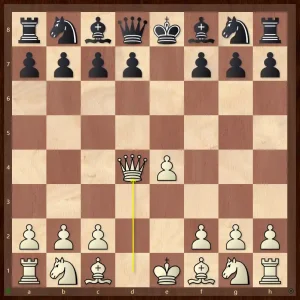
As early as the third move, White’s move defies the fundamental principles of classical opening play. Not only does he move his queen before any of his other pieces, but he also allows it to be attacked immediately.
The early Queen sortie resembles the Scandinavian but with an extra tempo. The other difference is that we already have an extra pawn in the center. This central pawn also gives White a space advantage.
White’s goal is to develop his Queenside quickly and have active piece play. After that, he will usually aim for a rapid attack on the kingside and/or in the center.
Black will look to exploit White’s early queen sortie with active piece play in the center.
Another advantage is that you get to decide the battlefield. White gets to implement his idea as early as the second move. Thus, if you choose to pick up the Center game, you will have the opportunity to play it in virtually every single game in which your opponent meets 1 e4 with 1…e5.
The only exceptions would be those rare cases in which Black meets 2 d4 with something other than 2…exd4.
This opening carries only a small fraction of the theoretical baggage of more mainstream systems such as the Ruy Lopez, Scotch, Four Knights, and the Bishop’s opening. It also manages to avoid the Petroff defense.
Nevertheless, White must know a certain amount of theory. Knowing the theory is essential to play this opening with success, as several lines can become extremely sharp at an early stage.
Mainline of Center Game
1. Black plays actively
The Mainline of the Center Game is:
1 e4 e5 2 d4 exd4 3 Qxd4 Nc6 4 Qe3 Nf6 5 Nc3 Bb4
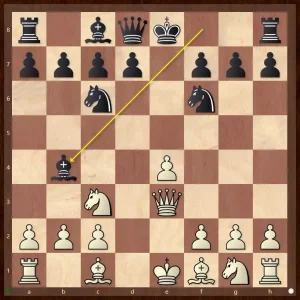
Black develops naturally. Opting to bring out the knights before committing to a pawn structure. This move is also the top choice of the engine and several top players.
If given two more moves Black’s idea is the simple 0-0 followed by Re8. The Rook will pressure the e4 pawn and eye the Queen on the same line.
5.Nc3 Bb4 6 Bd2 0-0 7 0-0-0 Re8
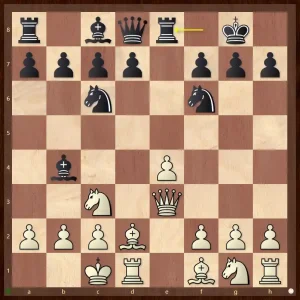
Black plays logically. Now Black threatens to win the e4-pawn and expose the White queen. However White has an interesting idea at his disposal.
8 Qg3!
Offering a pawn sacrifice. It’s not advisable to defend the pawn with 8 f3 as Black can strike in the center with 8..d5!
Moving the Queen to the side is White’s only try to muddy the waters and sharpen the struggle. Now Black can either accept the sacrifice or deny it with a move like d6. Accepting the sacrifice is the most testing continuation.
8…Rxe4!
This is the main line. 8..Nxe4 is also possible.
White cannot capture the Rook because after 9. Nxe4 Nxe4 10.Qf4 Bxd2+ 11.Rxd2 Nxd2 12.Qxd2 d5 and Black is better as he has an extra pawn, better development, and central control.
The following game demonstrates the dynamic chances White has in this line.
A. Shabalov vs A. Ivanov, US Championships 1994
Now let’s look at a game where Black declines the pawn sacrifice with 8..d6
A. Morozevich vs M. Hebden, London 1994
Another option for Black is to play with restraint and get his pieces out first before engaging White. Black has to be careful in this line as if Black plays too passively then White can quickly drum up a strong initiative.
2. Black plays with restraint
1 e4 e5 2 d4 exd4 3 Qxd4 Nc6 4 Qe3 Nf6 5 Nc3 Be7 6 Bc4
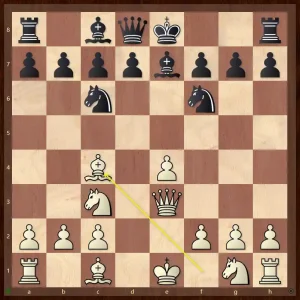
This is White’s most promising move here. White has enjoyed considerable success in this line.
6…0-0 7 Bd2 d6 8 0-0-0

A. Shabalov vs I. Shliperman, New York 1995
This game was a model demonstration of the attacking chances White can obtain in the Center Game. The attack from the kingside was quite easy to plan and execute, and Shabalov completed his deft play with a flawless combinational finish.
Black opts for Queenside Fianchetto
The move b6 is logical but it uses a tempo in the opening on a non-developing pawn move. In open games each tempo is crucial and Black cannot afford to waste it. Therefore, the move b6 is slightly inferior to the mainlines. The ideas behind the move are
- Use the b6 pawn as an anchor to develop the f8 bishop to c5. This move gains a tempo on the Queen. So this is Black’s justification for using a tempo on the move b6. However, as we have seen before White anyhow voluntarily moves the Queen to g3.
- Another idea for Black is to develop the bishop on b7, or occasionally even a6. These might sound superficially like interesting and creative possibilities, but the square b7 is not that active for the Bishop as the Knight on c6 would affect its mobility.
Black opts for Kingside Fianchetto
1 e4 e5 2 d4 exd4 3 Qxd4 Nc6 4 Qe3 g6
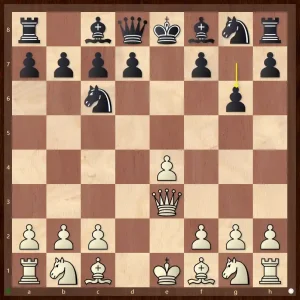
Going for a Kingside fianchetto with g6 is a respectable way to play for Black.
Against this White can go for the Standard attacking plan of h2-h4-h5. This works very well against this line and if Black is not cautious then White can score a quick victory.
If you want a more in-depth analysis and the latest theoretical novelties to surprise your opponents in the Center game then check out this latest course:
Discover more from reviewer4you.com
Subscribe to get the latest posts to your email.



![Top 5 Most Shocking Chess Openings! [TRAPS Included]](https://reviewer4you.com/wp-content/uploads/2024/11/5-RARE-Chess-Openings-That-Are-Actually-GOOD.webp-336x220.webp)

